Even late-model Volvos need routine maintenance, but only the right kind at the right time.
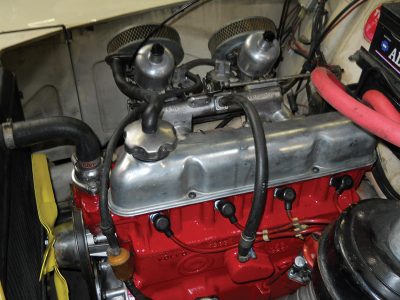
Volvo maintenance and service sure have changed over the years. In the old days a 122 or 240 would come into the shop every three thousand miles to get the oil and filter changed, and once in a while you would do what historians call a “tune up†(you young guys can Google what that means). These days auto service has become very complex and the service intervals can be confusing.
Take the engine oil change for example. Every 3K is not the rule any more, it’s the exception to the rule. Advanced synthetic oils that have sophisticated additive packages have been proven to perform well past 20K miles before the oil starts to break down.
With auto manufacturers having to comply with stricter EPA standards and wanting to sell cars that require less maintenance, most modern cars have adopted 5,000, 7,500, 10,000, and even 15,000 mile oil change intervals.
A lot of you are reading this, rolling your eyes and saying “yeah right.†Yes it’s hard to believe but if the customer follows the service guidelines and drives a normal driving pattern, they can conceivably use these oil change intervals. Of course this so-called “normal†customer is checking and topping off their engine oil with an approved product between services, right?
How many of your customers fall into the category of the normal service schedule? Not many. Depending on their age, the “average†Americans drive just over 13K miles a year. Most manufacturers’ service intervals are based on the “normal†service schedule which is based on the “average†motorist. Here is a great definition of normal vs. severe service.
The maintenance intervals that are listed under Normal Service are designed by the vehicle manufacturer to meet the needs of the “average†motorist.
Since maintenance intervals are affected by climate and operating conditions, customers who operate their vehicles under more arduous conditions, or whose driving habits are markedly different from the “average†motorist should have a more personalized service program developed for them. This will ensure the continued safe and reliable operation of their vehicle.
Because Volvo does not specify a Severe Service interval, the determination of the proper maintenance interval should be left to the good judgment of the vehicle owner and the advice of an authorized service center.
Conditions that will affect the frequency and composition of Normal Service:
- Operating in dusty, wet or muddy terrain
- Frequent driving in dense city stop-and-go traffic
- Repeated short trip operation without sufficient engine warm up
- Ambient temperature extremes
- Operating in mountainous/high altitude areas
- Trailer towing
NOTE: Low mileage vehicles should be serviced at least once a year.
Well, do any of your “average†customers fit into the “normal†service category? If so, your shop is not “average.†So what do we do? Go back to the old days and sell everyone an oil and filter change at 3,000 mile intervals? No.
It’s important to educate your customers on the benefits of preventive maintenance.
The oil change intervals that Volvo recommends are 7,500 miles for Volvos up to 2012 and 10K miles for 2013-up models, with approved synthetic oils. Use Volvo factory recommendations when possible and customize service programs for customers that drive a lot more or fewer miles than average.
Make sure to educate your customers on the benefits of preventive maintenance and the steps they should take if they are going to use these longer oil change intervals.
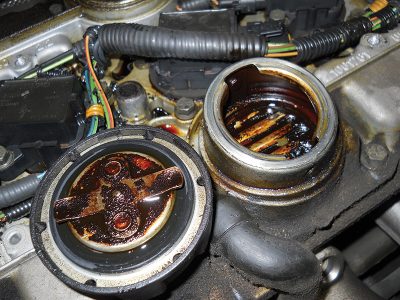
Some drivers under the age of 35 need a lot of education when it comes to servicing their Volvo. Baby boomers were taught at an early age to do things like check the engine oil and get the car serviced regularly. A lot of younger Volvo drivers wait until they see a warning light or two before they bring the car in. How many times has a younger driver come into your shop asking for an oil change because the oil light came on?
But it’s not always their fault. They were raised in an age where the media has built a lot of distrust in the automotive service industry. The media tells the public things like “you only need to change your oil every 10 to 15K miles,†but neglect to mention that this only applies to some newer cars using fully synthetic oil.
The fact that drivers have to check and top off the engine oil between services is always left out of the stories too, because we all know no matter how tight and new that engine is, it will use some oil in 10K or 15K miles.
Any service these days should include a safety inspection, especially if the car only comes in once a year, because a lot can happen between services. All Volvo models have specific pattern failures to look for as the cars get older, which are covered in all editions of this magazine.
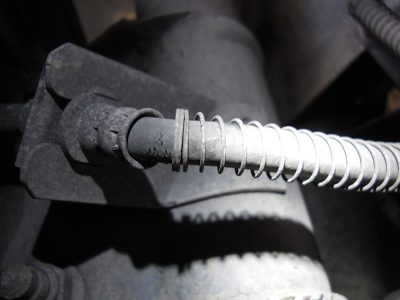
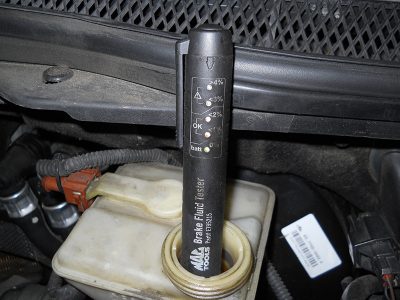
All service inspections should include a test drive, wheels-off brake inspection (when possible), checking the brake hydraulic hoses for cracks and bubbles (common problem on older Volvos), checking suspension for play, wear and damage, tire tread depth, pressure and wear check and, of course, check for oil and fluid leaks. You should also check exterior lights for function. When checking under the hood, check the fluids for level and fluid condition.
Check the car’s odometer for the mileage and consult VIDA or your repair information program to see what Volvo recommends for that year and model at that mileage.
Volvo Fluid Service
Brake fluid
On most Volvo models, brake fluid should be changed at 37.5K miles or every two years, whichever comes first. In areas were there’s a lot of rain or humidity it may be necessary to change fluid more often. Brake fluid is hygroscopic, meaning it adsorbs water out of the atmosphere, so the best way to check the condition of the fluid is to use a brake fluid test strip or an electronic brake fluid hydrometer. Brake fluid should be flushed and refilled if it has moisture content of over two percent.
Coolant

When checking coolant condition, the color of the coolant is not the best indicator of whether it’s good or needs to be changed as stated in Volvo TSB TJ-29751. However there are a few coolant colors that are indicators of other problems. Coolant that looks like a strawberry milk shake is a sign of transmission fluid leaking through the transmission cooler tubes in the radiator. This is a serious condition; it damages the coolant hoses from the inside and is difficult to flush out completely.
The bigger problem is the coolant that’s in the transmission oil. Often the transmission oil will look OK visually, but don’t let that fool you. The only proven way to tell if there is glycol in the transmission fluid is to have it tested. Volvo has a test kit and procedure for this condition, check out TSB JT-16724 for details.
If the Volvo you are checking out has this problem, you should start by inspecting the coolant hoses closely and check the TCM to see if any codes are stored. If no codes are stored and the hoses are OK, you need to tell the customer that, at a minimum, the radiator or the transmission cooler (if it’s separate like the one on the XC90) needs to be replaced and the transmission and cooling systems need to be flushed. Of course the customer should be advised that this may have damaged the transmission and may have shortened the life of the coolant hoses.
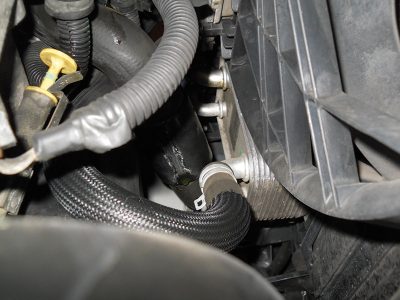
If the coolant looks more like a chocolate milk shake, then there may be engine oil contamination. Be careful what you recommend here because this can be caused by multiple problems. On most other cars this would be a sure sign of a blown head gasket, but this is not always the case with Volvos. The more common cause is an internally leaking oil cooler. The car could have a blown head gasket, but if the engine oil looks normal, the oil cooler is most likely the cause.
When coolant replacement is called for use only OE Volvo coolant mixed 50/50 with water. Don’t mix coolant types or colors. When refilling Volvo cooling systems that have hoses that are part hard plastic bonded to rubber, it’s best not to use a vacuum airlift filling system. A lot of shops report these types of hoses failing after using this tool; the vacuum can pull the bonds apart on older hoses.
Transmission Fluid
On most Volvo models 1999–present there is no specified transmission fluid change interval. Most shops in the independent world recommend a 3 year/30K mile change interval for non-synthetic transmission fluids and 6 year/60K mile interval for synthetic transmission fluids.
Make sure you are using the correct fluid type for the year and model Volvo you’re working on. Volvo is very specific when it comes to transmission fluid recommendations. There are very few aftermarket fluids that meet all of the correct specifications for Volvo transmissions, so don’t take any chances, use only OE Volvo transmission fluids. You can consult the chart on page 18 to find the correct fluid and part number for the Volvo you’re servicing.
A word of caution when changing transmission fluid to try to “fix a problem.†If on your initial pre-service test-drive you experience some shifting or transmission issues it’s time to ask the customer if they have been experiencing any problems themselves. And if your customer comes in and requests that you change or “flush†the transmission fluid you should proceed with caution.
Ask the customer why? In a lot of cases they will tell you that someone recommended that they change the fluid and in some cases they will tell you it has shifting problems or slams into gear. You should manage the expectations of the customer by explaining that changing the fluid may not help their transmission problems and in some cases may make them even worse.
A lot of Volvo dealers are requiring customers to sign a waiver before changing the transmission fluid on higher mileage cars. Not a bad idea, it’s better than having to buy the customer a transmission.
In some cases a transmission fluid change and TCM software can fix some shifting issues. Of course you should get the customer to authorize some testing and diagnosis, to make sure there are no mechanical faults in the transmission before trying this first step.
AWD differential & angle gear fluids
Volvo does not specify a service interval for these fluids. Most shops replace these fluids when performing repairs on these components. Make sure to use the correct OE Volvo fluids for the model and drive train you’re working on.
Timing Belts
Volvo used timing belts on most of their models from 1975–present. 1999–2015 service intervals can be found in service bulletin (group 21 #044). Depending on the year and engine type, timing belt replacement mileage ranges from 105K or 10 years, to 150K or 10 to 15 years on the newer models.
A lot of the Volvos that come into independent shops are getting their second timing belt. Since these Volvos are at higher mileages, the tensioner bearing, idler bearing and water pump should be changed at the same time.
Most shops recommend this combination of repairs on every timing belt job. Replacing just the belt is not worth the risk. Always install a timing belt service sticker so the other shops can tell when it was changed last, because it’s very hard to determine the age or mileage of the belt visually. Most timing belt failures on 1998–present Volvos can be linked to bearing or water pump failures, not the belt breaking.
Spark Plugs
Volvo spark plug replacement mileage intervals vary depending on the year and model. Make sure you consult VIDA or your automotive information system before recommending replacement. Volvos are very sensitive to spark plug configuration. A lot of shops have reported problems with aftermarket plugs, like premature failures and poor performance. The best way to ensure problem-free spark plug performance is to install only OE Volvo plug sets. The spark plugs should be torqued to 18 lb-ft or 25 Nm on most models with aluminum heads.
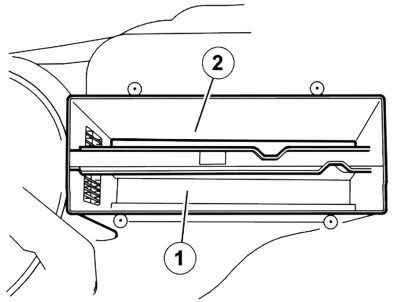
Cabin filters
Starting in 1994 with the 850 series, Volvo offered an interior climate control filter as an option. Later, in 1999, it became standard equipment on all models. Replacement intervals vary but the average replacement mileage is every 15K miles (more often in dusty areas). The first cabin filters used on 1994–2000 850, S, V, and C70 models are very easy to check and change — just open the hood, remove the three T25 Torx screws on the passenger side of the wiper cowling and carefully lift up the plastic panel and change the filter. On all later Volvo models starting with the 1999 S80, S/V40, the cabin filters have to be accessed from under the dash. On later Volvos the filter is mounted under the passenger’s side dash. This example is the filter housing used in the 2004 S80.
Most Volvo cabin filters are relatively easy to service, but there is an exception. The cabin filter for the P1 cars (S40 2005) can be challenging for some techs.
You access these filters from the driver’s side of the car. Start by carefully removing the three M6 (10mm) nuts. The best tool setup for this is a ¼ inch drive ratchet with a long wobble extension and a deep 10mm socket. Carefully disconnect the pedal sensor connector, remove the pedal assembly and pull back the carpet. To access the filter remove the cover. Early versions had three 7mm screws; later versions have one white plastic wing nut holding the cover on.
Remove the cabin filter by pulling it out behind the brake pedal. When installing the new filter, compress it slightly to fit into the opening and make sure the arrow for the air flow direction is pointing to the rear of the vehicle. Reinstall the three screws (torque to 10 Nm) or the wing nut, fold the carpet back, reinstall the accelerator pedal assembly and tighten the three nuts to 10 Nm.
Volvo Fuel Filters
Volvo fuel filters are so well designed they rarely have problems and last a long time. On most models, Volvo recommends replacement at 105K miles. Make sure to use only factory Volvo fuel filters. This filter only gets changed about every 10 years so it’s important to use a filter that was tested and designed by Volvo for Volvo fuel systems.
Volvo Air Filters
Volvo’s recommendations on air filter replacement intervals vary from year to year and model to model, but the average replacement interval is every 15K miles (more often if the Volvo is driven in dusty areas like the desert or the beach).
A lot of shops will use a cheaper aftermarket air filter because they think there’s not much difference. The main reasons to use an OE Volvo air filter instead of a cheap copy are:
- They right fit the first time and take less time to install. How many times have you had to fight one of those cheap filters into the air box? What’s your time worth?
- Volvo tests and designs these filters to maximize engine efficiency while protecting your customers’ engines from all kinds of damaging dust, debris and contamination, in some cases down to the sub-micron level.
- Compare the cost to value and you will see that installing genuine Volvo air filters provides the best value for your customers.
Regular service and preventive maintenance are key to keeping your customers’ Volvos running safely and efficiently for many miles and years.
Using factory Volvo service parts and fluids is far better than using aftermarket copies. The difference in fit, function, and service life makes them the best value and the best choice.
When your customers know that you use only OE Volvo parts and fluids to service their cars, they will know that you care and that your shop performs top quality service. And when you educate your customers on the difference they’ll welcome the peace of mind.
Application | Note | Part Number |
5- and 6-Speed Automatic Transmissions This fluid is also recommended to address two complaints on the AW 50-42: | JWS 3309The only oil approved for the 5- and 6-Speed automatic transmission is JWS 3309. None of the other fluids available on the market have been evaluated by Volvo to meet the requirements of these specific transmissions regarding: | |
| 4-Speed Automatic Transmissions
| Dexron IIIG or IIIH | 1161621 (4 liter) |
| 5- and 6-Speed Manual Transmissions
| API GL4, Synthetic | 1161745 (1 liter) |
| Angle Gears (All) | API GL5, BOT | 1161648 (1 liter) |
| AOC (Active On-Demand Coupling) | Specific oil for the AWD clutch | 1161641 (300 ml) |
| Rear Differential (200/700/900 with optional limited slip) | API GL5, with limited slip additive | 1161619 (1 liter) |
| Rear Differential (All Others) | API GL5, low friction | 1161620 (1 liter) |
| Cleaning Manual Transmission Input Shafts | Sprayable mineral based grease | 1161657 (200 ml) |
| Lubricting Manual Transmission Input Shafts | Sprayable PFPE grease | 30759651 (150 ml) |
| Lubricating AWD spline interface – Splines between transmission and angle gear | Lithium grease with PAO base | 1161748 (10 ml) |








0 Comments